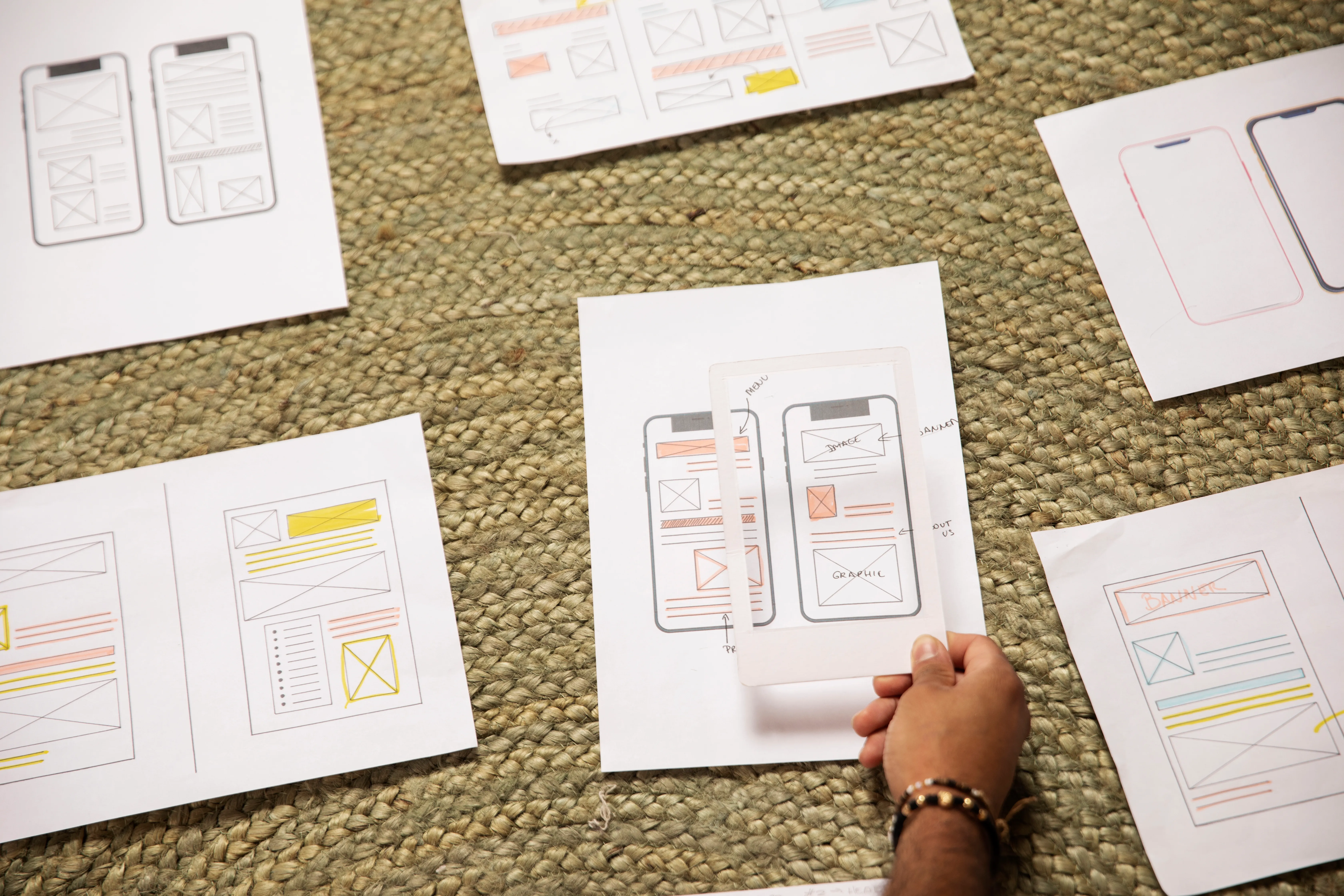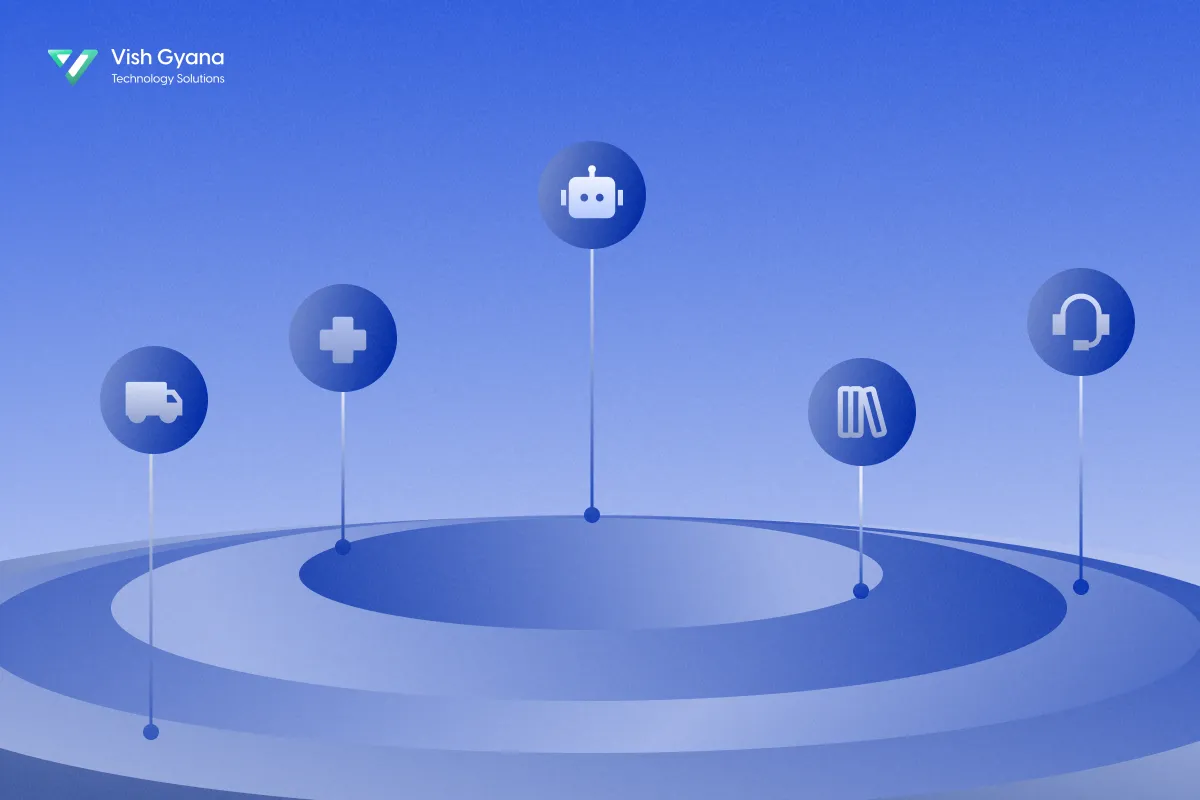
User expectations evolve rapidly. Given this, creating an interface that resonates with real people is essential for the success of any product. Human-centric UI and UX design focuses on the needs, preferences, and behaviors of users at every stage of the design process. It’s not just about making things look pretty; it's about ensuring the user experience is smooth, intuitive, and meaningful.
The importance of this approach cannot be overstated. Studies have shown that 88% of online consumers are less likely to return to a site after a bad user experience. This statistic emphasizes how crucial it is to design with the user in mind. In this blog post, we'll dive deep into the principles, benefits, and best practices of human-centric UI/UX design, helping you understand why it should be the foundation of your design process.
What is Human-Centric Design?
Human-centric design is a philosophy that places the user at the center of the design process. The core principles include empathy, usability, and accessibility. This design approach focuses on understanding the user's needs, wants, and pain points to create an intuitive and inclusive experience.
Empathy is at the heart of human-centric design. It means stepping into the shoes of the user, understanding their goals, frustrations, and challenges. Usability ensures that the product is easy to navigate and intuitive. It’s about minimizing confusion and effort for the user. Finally, accessibility ensures that your design works for all users, including those with disabilities.
This approach differs from traditional design methods, which often prioritize aesthetics and technical functionality over real-world usability. While traditional design may create visually pleasing interfaces, human-centric design ensures that these interfaces are meaningful, engaging, and functional for the people who use them.
Why is Human-Centric Design Crucial?
When it comes to digital products, the user experience (UX) plays a critical role in shaping customer satisfaction and retention. If users have a positive experience, they’re more likely to stay engaged, return, and recommend the product to others. In contrast, poor UX can lead to frustration, high bounce rates, and lost opportunities.
For businesses, the impact of human-centric design is far-reaching. A great user experience can boost conversion rates and brand loyalty. Studies have shown that companies with a strong focus on user experience outperform their competitors in terms of revenue and customer satisfaction. In addition, human-centric design fosters inclusivity and accessibility, which broadens your audience and ensures that everyone—regardless of their abilities—can engage with your product.
Incorporating inclusive and accessible design is not just a matter of compliance; it’s about creating a positive experience for a diverse user base. As accessibility becomes a growing concern globally, prioritizing these elements ensures your product remains relevant and user-friendly for all.
Key Elements of Human-Centric UI and UX Design

The key to creating a truly user-centered experience lies in understanding and implementing core elements that prioritize the needs and behaviors of your audience at every touchpoint.
1. User Research and Empathy Mapping
The first step in creating a human-centric design is understanding who your users are and what they need. This is where user research comes into play. By conducting interviews, surveys, and focus group studies, you can gain invaluable insights into the pain points, preferences, and challenges your users face. Empathy mapping is a tool that helps designers visualize user experiences, emotions, and motivations, allowing them to build solutions that truly resonate with users.
2. Usability Testing
Designing with empathy doesn’t stop at the research phase. It’s important to test your design with real users to ensure that it meets their needs. Usability testing allows designers to observe users as they interact with the product, identifying areas for improvement. Regular iteration based on feedback ensures that the design evolves to better meet user expectations.
3. Intuitive Navigation
Intuitive navigation is key to a seamless user experience. By simplifying the user journey, you make it easier for users to find what they need without unnecessary steps. Clear menus, easily identifiable buttons, and a well-structured layout help users navigate effortlessly, reducing frustration and increasing satisfaction.
4. Accessibility Standards
Human-centric design goes beyond making products easy to use for the majority of people. It also involves designing for all users, including those with disabilities. This means considering color contrast for visually impaired users, ensuring keyboard navigation for those with motor impairments, and providing text alternatives for images. Following accessibility standards ensures that your product is usable by the widest audience possible.
5. Aesthetic Simplicity
While functionality is paramount, aesthetic simplicity is also important. A cluttered design can overwhelm users, making it difficult to focus on key tasks. By balancing visual appeal with function, you create a design that’s not only beautiful but also easy to navigate.
Benefits of Implementing Human-Centric Design
Implementing human-centric design is more than a user-first philosophy—it's a strategic advantage that drives meaningful connections, boosts engagement, and ensures long-term success for your digital products. Adopting a human-centric approach has several key benefits:
- Enhanced User Satisfaction and Engagement: When users find your product intuitive and easy to use, they’re more likely to engage with it regularly and recommend it to others.
- Reduced Bounce Rates and Increased Conversions: A smooth and enjoyable user experience encourages users to stay longer on your site or app, leading to lower bounce rates and more conversions.
- Future-Proof Designs: As user needs evolve, human-centric designs are flexible enough to adapt. By focusing on the user, you create a foundation that can evolve with changing trends and technologies.
By putting users at the heart of the design process, businesses can create experiences and secure both user loyalty and competitive edge in an ever-evolving digital landscape.
Real-World Examples of Human-Centric Design
Some of the most successful companies in the world have built their success on human-centric design principles. Let’s look at two great examples:
- Airbnb: The company’s success can be attributed to its user-centered design approach. Airbnb has focused on providing a seamless, intuitive experience for both hosts and guests. Their website and app are simple to navigate, and the process of booking or listing a property is designed to be as stress-free as possible.
- Zoho: Zoho’s website exemplifies human-centric design through its clean layout, intuitive navigation, and focus on simplifying complex processes. With a wide array of products, Zoho ensures users can quickly find what they need without feeling overwhelmed. The design emphasizes usability, making it easy for businesses to explore, compare, and adopt solutions tailored to their needs.
What sets these companies apart is their commitment to understanding their users and continuously improving their products based on user feedback.
How to Incorporate Human-Centric Design into Your Process

To incorporate human-centric design into your workflow, follow these steps:
- Research: Begin by gathering insights into your users’ needs, behaviors, and challenges through surveys, interviews, and user testing.
- Ideate: Brainstorm solutions that prioritize user needs, focusing on creating an intuitive and accessible experience.
- Prototype: Create low-fidelity prototypes to visualize design concepts and gather feedback early on.
- Test: Conduct usability tests with real users to identify areas of improvement and iterate on your designs.
- Iterate: Refine your design based on feedback and continuously optimize it to meet evolving user needs.
There are several tools and resources available to streamline the design process, such as Figma for prototyping, Hotjar for user behavior analytics, and Accessibility Insights for ensuring compliance with accessibility standards.
Conclusion
In a digital world where user expectations are higher than ever, adopting a human-centric design approach is essential. By prioritizing empathy, usability, and accessibility, you create products that are not only functional but also delightful to use. The benefits of human-centric design—enhanced user satisfaction, increased conversions, and adaptability—make it a critical component of any successful product development strategy.
Looking for a web or mobile application development company that truly keeps humans at the center of the design process? Talk to one of our consultants today and discover how we can give your customers a new experience through a world-class app.





























